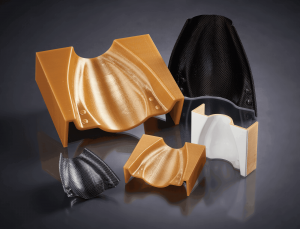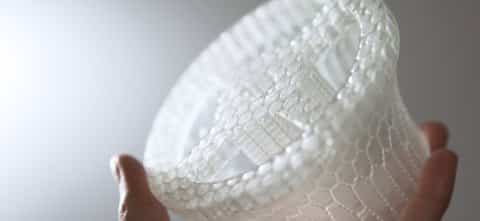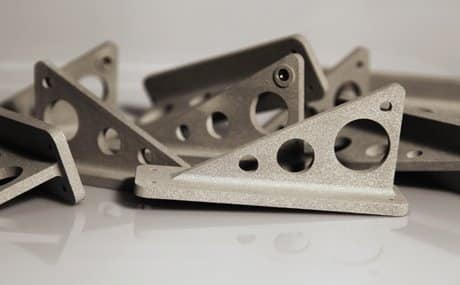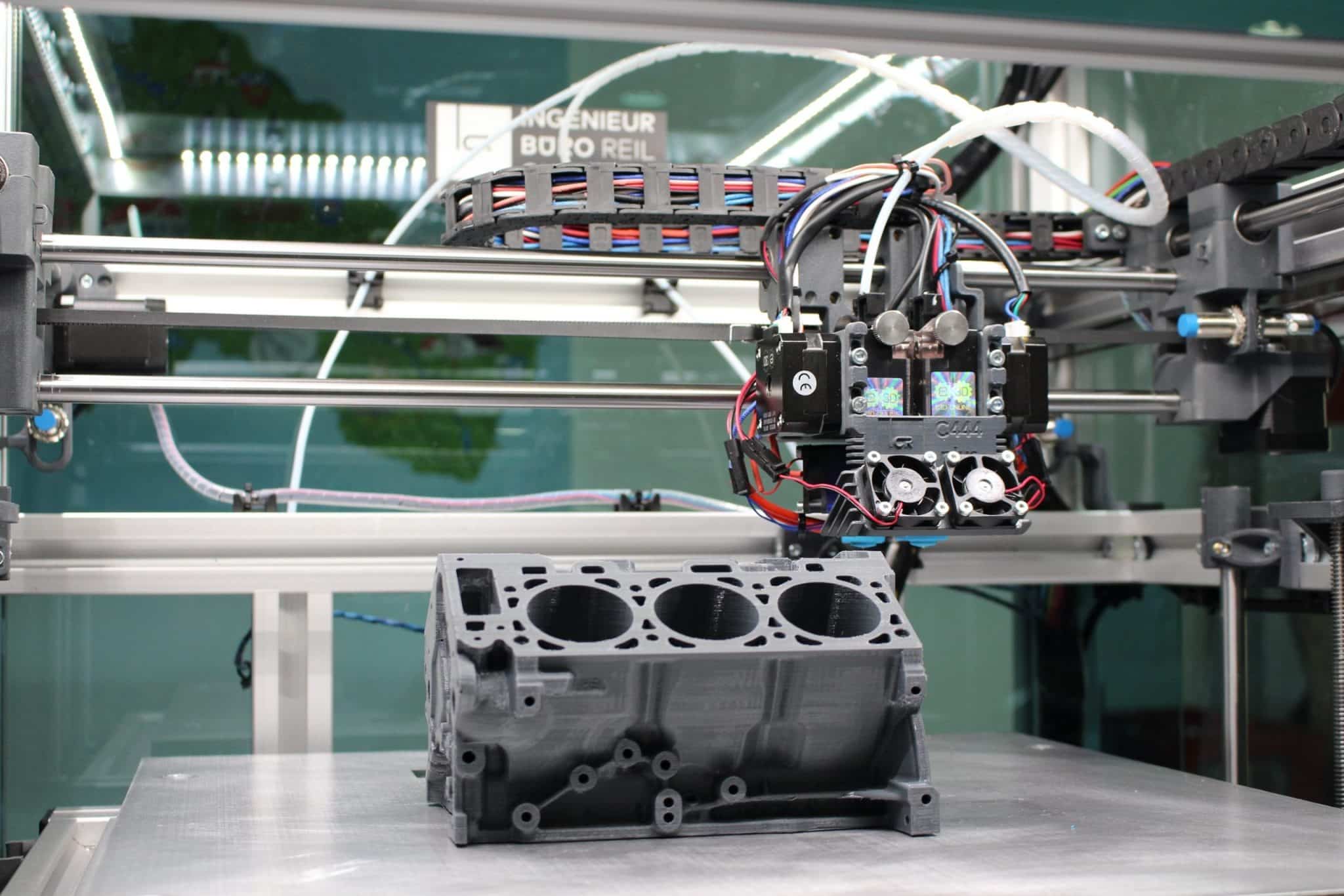Are you a medical professional considering 3D printing to create new prosthetics and medical implants? Or an engineer developing new innovative tools and technologies and you need prototypes printed for testing? If so, you are undoubtedly going to ask: “how do I calculate the 3D printing cost?”
Your Options
3D printing enhances the manufacturing processes of so many industries from art to engineering to science. You can simply design a custom tool or product and have professionals print it for you.
There are two ways in which you can learn exactly how much a 3D print is going to cost:
Option 1: First, you can consider exactly what type of material will suit your needs. Next, calculate the material costs. Lastly, factor in the post-processing requirements for your print along with print time, labor costs, and operational costs.
Option 2: Take advantage of some of the newest apps and software that automates this entire process. Using software such as Jiga enables you to upload a model and then be put in contact with the relevant 3D printing professionals so that you can move on to the next step of the process.
It also always helps to understand what goes into the cost of creating a custom 3D printed part, so keep reading to get a complete understanding of the process.
What Are the Main Costs Involved in Getting Something 3D Printed?
3D printing is like any other manufacturing method. Calculating the 3D printing cost involves the understanding the following costs:
- All involved materials
- Any required post-processing
- The printing time relating specifically to the:
- 3D print design
- labor costs
- operational costs.
Materials
Your desired structural characteristics and the end finish will determine the type of materials that you choose for your 3D print. In turn, this will determine what specific type of 3D printing machine/technique needs to be used.
The three main types of 3D printing techniques are fused deposition modeling (FDM), stereolithography (SLA), and selective laser sintering (SLS). Let’s discuss more about these.
Fused Deposition Modeling (FDM)
The FDM technique uses a range of thermoplastic filaments with varying properties which are melted and layered in the printing process.

PLA thermoplastic materials are by far the cheapest of these. They have moderate layer adhesion, stress resistance, and visual quality while being extremely easy and quick to print. Unfortunately, they have low humidity and heat resistance and can be brittle.
PLA materials can cost on average around $15-$20 per kilogram. However, choosing a lower-priced material may impact the quality of the print and end result. This option is perfect for prints that need to be biodegradable, such as for food packaging and medical implants that need to dissolve in the body over time.
ABS thermoplastics on the other hand, are great for prints that require high levels of heat and impact resistance, although these are UV sensitive. However, they give a glossy finish with post-processing.
Additionally, they are suitable for rapid product prototyping and any products subject to regular wear and tear. They have the same average price as PLA materials, at around $15-$20 per kilogram.
While there are many more materials used in the FDM printing technique, the third most common one is nylon filaments. Nylon is great for prints with mechanical uses and moving parts. It has a high impact and chemical resistance, although it has a higher price than the above options with an average price between $50-$73 per kilogram.
Stereolithography (SLA)
The SLA 3D printing technique functions differently than FDM. It uses a pool of laser-curable resin that sets when hit with the target laser, allowing for highly accurate prints with great resolution. These resins are divided into standard, engineering, and dental/medical SLA resins.

Standard SLA resins make smooth, high-resolution prints. However, they tend to have low impact strength and low heat resistance.
Engineering resins can essentially replicate injection-molded plastics and are great for tough, durable, and heat-resistant prints. Some engineering resins have rubber-like, flexible properties.
Dental/medical resins come in the forms of class 1 biocompatible resins, and class 2a biocompatible resins. Class 1 resins are perfect for making equipment used in the operating theatre for short-term use. While class 2a resins are better suited for long-term use in medical and dental appliances, as well as for short-term invasive surgical items.
Because of the range of material options, SLA materials can cost just $40 per liter for a low-quality, standard SLA resin, to upwards of $300 for high-quality medical grade SLA resin.
Selective Laser Sintering (SLS)
SLS works similarly to SLA in that it utilizes a laser for setting and bonding material. But instead of resin, SLS uses a range of polymer powders. Such as nylon to metal powders consisting of cobalt, titanium, nickel, and aluminum alloys.

The SLS technique produces strong, functional, end-use parts. In addition, it can produce prints with high levels of complexity at a faster rate than other printing techniques. The downside however is that metal printing powders come with a high price, anywhere between $350-$550 per kilogram.
Finishes and post processing
Some 3D printing techniques and materials require post-processing. This adds time to the entire process and therefore the overall 3d printing cost. These processes include cleaning, sanding, fixing, and hardening in the case of resins, and coloring if the design of your print requires it.

FDM techniques usually require cleaning and removing of any support material that held the print up while being printed. SLS techniques will need to have all loose power removed from the print manually. While SLA techniques need all unbonded resin to be washed off. SLA resins will normally also require an additional hardening process where they are exposed to UV light to ensure that the resin has finished bonding.
Wohlers Report 2018 estimated that around 27% of the total overall costs go towards post-processing of prints.
Designs
The specific design of your 3D print is going to influence the amount of material that is used both for the part and for any required supporting structures. If you try printing a highly complex shape using the FDA technique, for example, a number of additional supporting structures will need to be printed into the piece to support it through the process. Thereafter, all of these will need to be removed during post-processing.
Similarly, having thicker walls in your print will use more material, while using hollow spaces will reduce the amount of material. All of this needs to be designed around the specific uses of your print so that it has the right amount of strength and density for its end-use.
Printing time, labor cost and operational cost
The printing time is dependent on the complexity and resolution of your print. High-resolution prints require the printing of many more layers. So it is a good idea to find out the specific printing time of one single layer of your project. After that, multiply this by the number of layers required. Doing so will help you decide whether you can sacrifice or increase the resolution of your print.
Labor costs relating to 3D printing include any additional work that your design requires. This includes the preprinting and post-processing stages in order to optimize the process and product. It also covers any cleaning and maintenance tasks that are necessary for keeping the printer in good health.
For FDM 3D printers, the specific type of thermoplastic filament used can impact how much maintenance needs to be carried out on the printer. This involves from general cleaning to the wearing down and lifespan of specific parts.
And while simple, quick FDM prints will generate such a negligible amount of electricity that it won’t affect the overall cost of the print. Keep in mind that highly complex and lengthy prints using either the SLS or SLA method may use enough electricity that this will be seen in your bill.
At the end of the day though, whether you are a mechanical engineer, a medical professional, or a home hobbyist who needs specific, custom-made tools either ready for their end-use or as a means of developing prototypes for testing, you have two choices to make when estimating the cost of a print.
You can put in the groundwork by calculating the specific material and production costs of your print, or you can upload your designs to Jiga for fast quotes comparison and access to a large number of vetted 3D printing suppliers.

Yoav A

